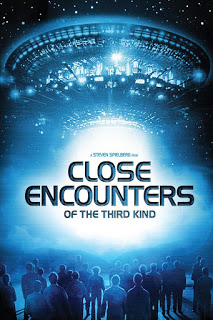I must mean UFO or Unidentified Flying Object? You remember the movie Close Encounters of the Thrid Kind? Spielberg’s massive hit in 1977 following his release of the original Jaws. Back in those days UFO sightings were often in the news (or tabloids anyway) and this movie hit the sweet spot. It even helped launch the toy “Simon” which as it turns out was very similar to the multicolored, note-playing alien saucers featured in the movie – coincidence?
So, what the heck is UBO? Well, as it turns out the human body exhibits a variety of anatomical details in the ever so important Magnetic Resonance Imaging (MRI) scan that we have all learned to love (see our series on MRI and Carotid Stenosis). The majority of patients have similar anatomical features on imaging but some fall outside these normative patterns. When radiologists come across findings that are difficult to interpret they will often refer to them as “Unidentified Bright Objects”. The challenge, of course, is that the radiologist needs to decide whether to label the anatomy in the image an “UBO” – essentially an image artifact – or “disease”.
This is where the rubber meets the road. Interpretation of MRI scans is work done by people, and, as with all jobs, the quality of performance varies. Therefore, the accuracy of the MRI exam is heavily dependent on the quality of the radiologists who interpret them. It is for this reason that the training a radiologist receives is crucial to his/her success. In addition, there is an important relationship that exists between the radiologist and the primary care physician as they have to balance indications of abnormality in MRI scans with the information provided by other techniques such as the clinical exam. A successful diagnosis relies on a good team effort.
Go Team!
Now for the fun part (see the rules here), using UBO in a sentence by the end of the day:
Serious: Went for my MRI today. Told me that the UBO on imaging was just an artifact. Nothing to worry about. Phew!
Less serious: Hey Bob, did you hear on the news the report of another UBO hovering over farmer John’s field last night? Or was that UFO? I always get those two mixed up…
Listen to UB [4] 0’s Red Red Wine to decompress and…
…I’ll see you in the blogosphere.
Pascal Tyrrell



.jpg)




